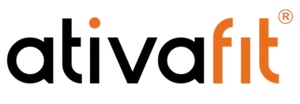Starting a pull day means focusing on the muscles that pull the weight toward your body, including your upper back, biceps, and rear shoulders. You begin by warming up your joints and core. Then, you move into heavy lifts, add some moderate moves, and finish with smaller muscle work. You end each session with a cool-down to aid recovery. This routine builds strength, improves posture, supports grip, and balances your physique. Everything in this guide is written in clear language. You will know what to do, why it matters, and how to progress safely. Build Your Best Pull Day, Train Smarter with the 66 Lbs Adjustable Weight Dumbbell Set!

This set is designed with steel plates and a reinforced base, making it perfect for general fitness and multi-purpose use. Each dumbbell weighs 66 lbs, with each dumbbell measuring 16.2"L x 7.2"W x 7.2"H for easy handling and storage. The Dial Tech system enables quick and easy adjustments, making it ideal for exercises with varying resistance levels, such as strength training, weightlifting, and functional fitness.
What are the Essential Elements of a Pull Day Workout?

Pull day focuses on the muscles used when pulling objects toward you. These muscles are crucial for maintaining posture, building strength, and facilitating daily movement. A proper pull workout trains your back, arms, and grip, helping you build muscle and reduce your risk of injury.
This workout begins with a gentle warm-up to increase your heart rate and loosen your joints. Warming up improves form and reduces the risk of strain when lifting heavier weights.
Which Muscles Are Trained on Pull Day?
-
Latissimus Dorsi (Lats)
Large back muscles that give your body a wide look. Used in pull-ups and rows.
-
Rhomboids
Located between the shoulder blades. Help pull your shoulders back and improve posture.
-
Rear Deltoids
The back part of your shoulders. It is important for balance and healthy shoulder movement.
-
Biceps
The front of your upper arms. Assist in pulling and curling movements.
-
Forearms
Control grip and wrist strength. Support most pulling and lifting exercises.
Warm-Up for a Pull Day Workout

Start your pull day with 5 minutes of light cardio, such as jump rope, a brisk walk, or rowing. Follow with arm circles and shoulder rolls (each for 1 minute), then perform two sets of 10 resistance band pull-apart. Finish with wall slides or scapular retractions for 2 minutes to activate your back and shoulders.
Once warmed up, begin with deadlifts, three sets of 4–6 reps. Keep your feet hip-width apart, hinge at the hips, and pull the bar close to your legs as you stand tall, squeezing your glutes. Rest 2–3 minutes between sets.
Next, do weighted pull-ups or chin-ups for three sets of 4–6 reps. Pull your chest to the bar and squeeze your shoulder blades. Only add weight after mastering clean bodyweight reps. Rest 2 minutes between sets.
Incorporate adjustable dumbbells for rows and other exercises to increase muscle engagement as you grow stronger! The Ativiafit’s 27.5 Lbs Adjustable Weight Dumbbell Set is perfect for these moves and will help you challenge your muscles more effectively as you progress in your routine. It offers versatile weight options ranging from 5.5 to 27.5 lbs, making it ideal for beginners and those looking to tone at home. The compact and space-saving design, with a size of 16.2"L x 7.2"W x 7.2"H, makes it easy to store and handle. Each dumbbell weighs 27.5 lbs and is crafted with steel plates and a reinforced base to ensure durability.
The steel core provides strength and stability, while the non-slip rubber grip ensures a comfortable, secure hold during your workouts. Featuring Glide Tech, this set enables you to easily adjust the weights, providing the flexibility to progress at your own pace. Whether you're working on toning or home fitness, this set is an excellent choice for anyone looking to improve their strength with a convenient and reliable set of dumbbells.
Moderate Compound Moves for a Pull Day
After completing your heavy lifts, you shift to moderate compound exercises. These moves focus on muscle volume and control, helping you develop your back and maintain proper posture. Unlike heavy lifts, moderate compound exercises allow for slightly higher reps with smoother, more focused movements.
Barbell Rows
-
Sets/Reps: 3 sets of 8–10 reps
-
Form: Hinge at the hips, keep your back flat, and pull the barbell to your belly.
-
Tip: Keep elbows close to your body and pause briefly at the top.
-
Rest: 1.5–2 minutes between sets
This move works your lats, rhomboids, and rear delts. It also strengthens your core and hamstrings due to the bent-over position.
Seated Cable Rows
-
Sets/Reps: 3 sets of 10–12 reps
-
Form: Sit tall, hold the cable handle, and pull it toward your upper stomach.
-
Tip: Squeeze your shoulder blades together and control the return of your movement.
-
Rest: 1.5 minutes between sets
This movement isolates the middle back and traps it more precisely. The cable tension provides smooth resistance, which helps develop better control and a full range of motion.
Why Should You Include Isolation Work in Your Pull Day Routine?
After you finish your heavy and moderate lifts, it’s time to focus on smaller muscle groups. These isolation exercises help shape your arms, improve symmetry, and support joint stability. They don’t require heavyweight form, and control matters most here.
Isolation work targets muscles that support big lifts, boost definition, and round out your physique. It’s the final part of your pull workout, helping you finish strong.
Single-Arm Dumbbell Rows
This move trains your lats and rear delts on each side, one at a time. It helps fix imbalances and improves muscle engagement.
-
Sets/Reps: 3 sets of 10–12 reps per side
-
Form Tip: Support one knee and hand on a flat bench. Keep your back flat. Pull the dumbbell to your ribs.
-
Rest: 1 minute between sets
-
Why it matters: It allows a deeper range of motion and more control than barbell rows.
Face Pulls
This exercise strengthens your rear delts and traps. It improves posture and keeps your shoulders healthy.
-
Sets/Reps: 3 sets of 12–15 reps
-
Form Tip: Use a rope cable or resistance band. Pull toward your face with elbows high. Pause at the end of the pull.
-
Rest: 1 minute between sets
-
Why it matters: Face pulls correct shoulder imbalance and are important for anyone who sits or presses a lot.
Bicep Curls
Curls isolate the biceps, helping your arms grow and improving pull strength.
-
Sets/Reps: 3 sets of 10–12 reps
-
Form Tip: Use dumbbells or a barbell for added resistance. Keep your elbows still, curl the weight up, and squeeze at the top. Lower slowly.
-
Rest: 1 minute between sets
-
Why it matters: Strong biceps support rows, pull-ups, and daily tasks like lifting or pulling.
Cooling Down After Your Pull Day

Every pull-day workout should end with a proper cool-down. This part is just as important as lifting because it helps relax your muscles, reduce tightness, and prevent next-day soreness. Cooling down improves blood flow, maintains joint health, and supports long-term mobility.
Start with an overhead lat stretch, holding it for about 30 seconds on each side. This targets your lats and shoulders, which do most of the pulling work. Next, do a biceps wall stretch. Extend your arm against a wall and gently rotate your body away to feel the stretch in your upper arm. Hold for 30 seconds per side.
Finish with foam rolling your upper back for about 2 minutes. Move slowly over tight spots and focus on deep breaths while rolling. This helps release muscle tension and improves recovery between workouts.
A proper cool-down keeps your muscles loose and ready for your next session. Never skip it; it’s quick, easy, and gives your body what it needs to rebuild and grow stronger.
How Do You Train Safely and Avoid Mistakes on Pull Day?
To train safely and build lasting strength, follow key form and control pull day tips throughout. Always keep your spine neutral during deadlifts and rows; your chest should stay open, and your core should be engaged. This helps protect your lower back from strain.
Avoid using momentum to lift weights. Swinging reduces muscle engagement and increases the risk of injury. Instead, move each rep with control and lower the weight slowly to maximize results.
Never skip your warm-up. Cold muscles are stiff and more susceptible to injury during heavy lifting. Prepare your joints and muscles with a few minutes of movement before each session.
Finally, pay attention to your breathing. Exhale during the effort (as you lift or curl) and inhale as you return the weight. Proper breathing keeps your core tight and supports good form.
Equipment Options and Alternatives
-
Barbell: best for rows and deadlifts.
-
Dumbbells: useful for rows and curls.
-
Pull-up bar: essential for pull-ups.
-
Cable machine or bands: good for rows and face pulls.
-
Foam roller: helps with release and mobility.
No equipment? No problem
-
Do inverted rows under a table.
-
Use towel curls: loop a towel over a beam and curl.
-
All moves still work if you use body weight and household items.
Final Thoughts
This pull-day workout gives you a clear path: warm-up, heavy lifts, moderate lifts, accessory work, and cool-down. You learn safe form, know what equipment to use, and get a plan for progress. Stick with two pull days per week, train hard, track your work, and rest well. You will notice stronger muscles, improved posture, and enhanced performance in daily life and other activities. Start your next session focused and determined. You’ve got this!
FAQs
How should I start pull-ups?
Use a chair, band, or partner to assist. Build strength until you can do unassisted reps.
What do face pulls do?
They target your rear shoulders and upper back. They help posture and shoulder health. See the ACE Fitness article for more.
How often should I do pull-up workouts?
Twice per week is ideal. This gives volume and time to recover.
Can a beginner follow this plan?
Yes. Begin with lighter weights and aim for 8–12 repetitions on all exercises. Master the form before using heavier loads.
Where can I watch good form demos?
Check out our internal exercise library for videos. Additionally, you can access free demos on our YouTube channel.

